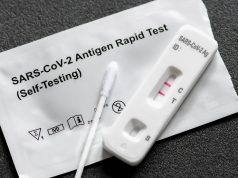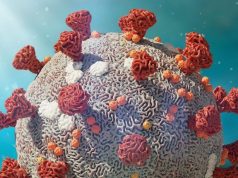Among healthy, young adults, risk for subsequent infection among seropositive participants about one-fifth of that for seronegative participants
MONDAY, April 19, 2021 (HealthDay News) — Among healthy, young adults, those who are seropositive rather than seronegative for severe acute respiratory syndrome coronavirus 2 (SARS-CoV-2) have a reduced risk for subsequent SARS-CoV-2 infection — about one-fifth the risk for infection compared with seronegative participants, according to a study published online April 15 in The Lancet Respiratory Medicine.
Andrew G. Letizia, M.D., from the Naval Medical Research Center in Silver Spring, Maryland, enrolled predominantly male U.S. Marine recruits, aged 18 to 20 years, following a two-week unsupervised quarantine at home. After the home quarantine period, participants were assessed for baseline SARS-CoV-2 immunoglobulin G (IgG) positivity and underwent a supervised two-week quarantine period. Participants with three negative results during quarantine and a baseline serum serology test were included in the study; both seropositive and seronegative groups underwent three SARS-CoV-2 tests at weeks 2, 4, and 6 in a prospective study.
The researchers enrolled 3,249 participants, of whom 98 percent continued into the two-week quarantine period. Ninety-five percent of participants were followed during the prospective study period. Of 189 seropositive participants, during the six-week follow-up, 10 percent had at least one positive test for SARS-CoV-2 (1.1 cases per person-year). Among 2,247 seronegative participants, 48 percent tested positive (6.2 cases per person-year). The incidence rate ratio was 0.18. Infection was more likely among seropositive recruits with lower versus higher baseline full-length spike protein IgG titers (hazard ratio, 0.45). Compared with infected seronegative participants, infected seropositive participants had viral loads that were about 10 times lower.
“Our results indicate that although antibodies induced by infection are largely protective, they do not guarantee effective immunity against subsequent infection,” the authors write.
One author disclosed financial ties to Co-Diagnostics; two authors have filed a patent regarding serological assays for SARS-CoV-2.
Copyright © 2021 HealthDay. All rights reserved.








